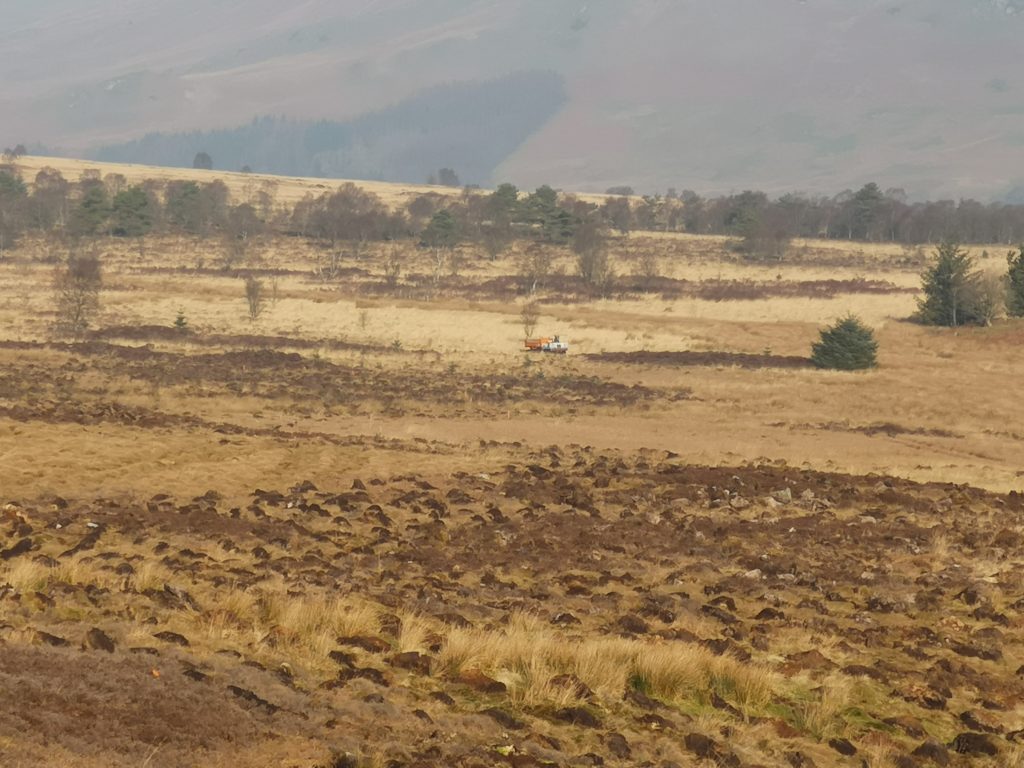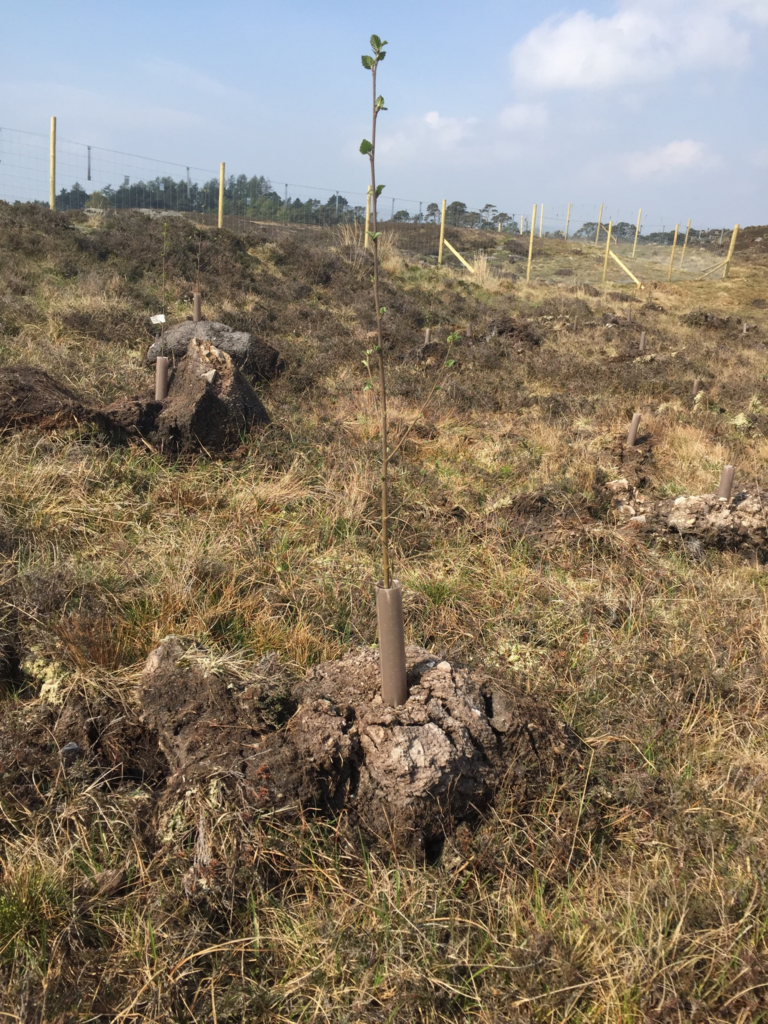

The Hill Farmer
Craigmaddie Muir, East Dunbartonshire
Land use: 53 ha managed for sheep and cattle production.
Challenge:
- Create a diverse, multipurpose woodland with paths that enable the farmer, his young family and guests to their roundhouse accommodation to enjoy woodland walks and access the site easily
- Create a visually attractive, colourful woodland that compliments and extends adjacent LNCS woodland habitats, protects deep peat habitats on site and improves local biodiversity
- Improves public access, creating links to adjacent Forestry Commission woodlands
How we addressed this:
We secured funding for this scheme through the Forestry Grant Scheme https://forestry.gov.scot/support-regulations/forestry-grants and Central Scotland Green Network (CSGN) http://www.centralscotlandgreennetwork.org/.
Located within the Craigmaddie Muir Local Nature Conservation Site (LNCS), this scheme was designed to expand the adjacent Craigmaddie Plantation LNCS using trees and shrubs native or naturalised to Scotland. Approximately 36 ha of the site was planted with trees, predominantly comprising Silver Birch, Scots Pine and Norway spruce, with targeted planting of native broadleaves, including Downy Birch, Alder, Rowan, Bird Cherry, Hawthorn, Hazel and Aspen around woodland margins and key riparian zones to protect important habitats and improve local biodiversity.
Approximately 30% of the site was left unplanted. Deep peat was identified and excluded from planting, with a moorland drain blocking programme agreed to improve peatland habitats. When designing the woodland, existing flora and fauna on site and within the surrounding area were taken into consideration, along with archaeological sites, geodiversity features, public access and views from prominent features on site and the surrounding local area.
This woodland will be managed using a CCF (Continuous Cover Forestry) silvicultural system. Yields of timber will be supplied over time whilst gradually opening the canopy through a managed thinning programme, ultimately improving the quality of the ever-maturing crop and allowing natural regeneration to supplement gaps created. This style of management helps to increase species and structural diversity, providing a more resilient woodland in relation to climate change, pests, diseases and extreme weather events. Without the impact of large clearfells, it is more sympathetic to the site and its nature conservation interests, the local area’s road infrastructure and to the local landscape.
Results:
Over time, this multi-purpose woodland will deliver a range of benefits by:
- Producing a range of sustainable wood products, providing a tax-free income to the farmer
- Protecting and enhancing biodiversity (flora and fauna)
- Sequestering carbon (contributing towards Scotland’s climate change targets)
- Improving public access in the local area

